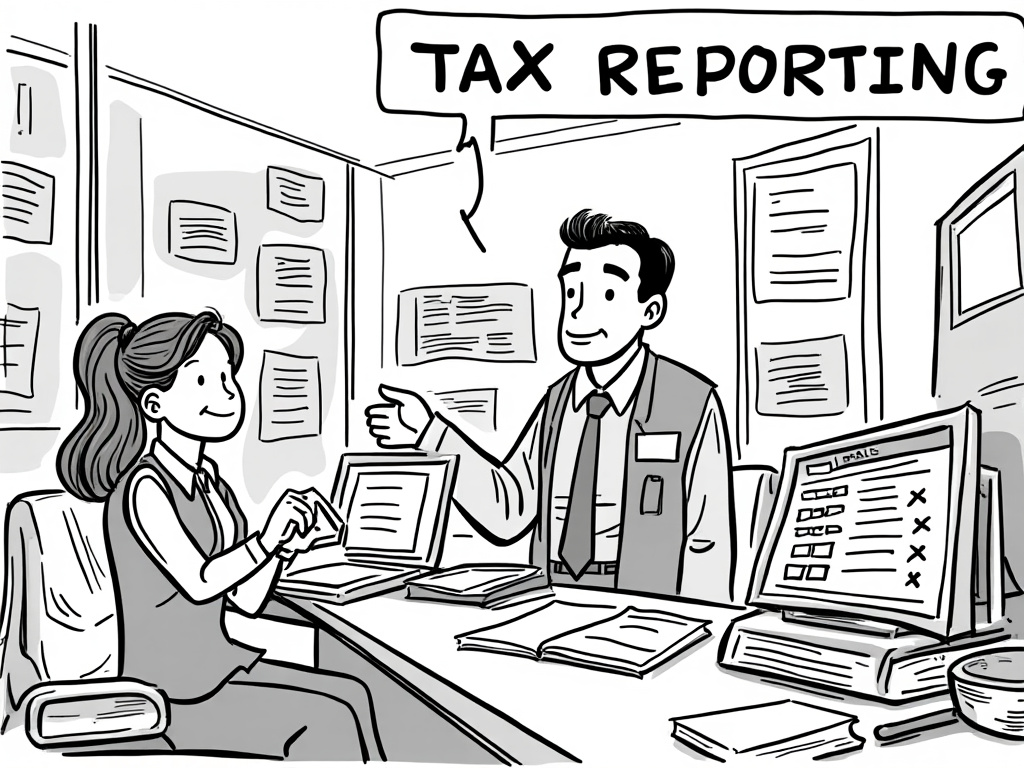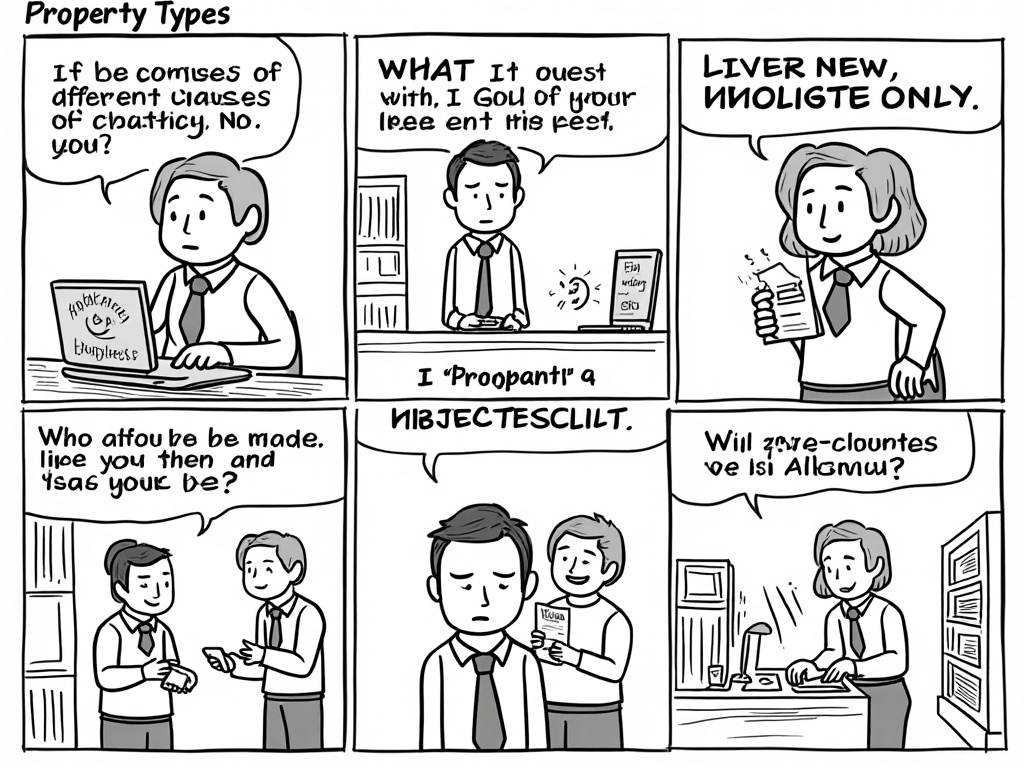
The Strategic Investor’s Guide to Rural Property Acquisition
Reading time: 12 minutes
Table of Contents
- Introduction: The Rural Property Renaissance
- Key Benefits of Rural Property Investment
- Property Assessment Framework
- Financial Considerations and Strategies
- Navigating Legal and Regulatory Landscapes
- Due Diligence: Beyond the Basics
- Case Studies: Success Stories and Cautionary Tales
- Future-Proofing Your Rural Investment
- Frequently Asked Questions
Introduction: The Rural Property Renaissance
The allure of open spaces has never been stronger. In a post-pandemic world where remote work has become mainstream, rural property acquisition has transformed from a niche investment strategy to a compelling lifestyle choice with significant financial upside.
According to the National Association of Realtors, rural property sales increased by 18% in 2022 compared to pre-pandemic levels, signaling a profound shift in buyer preferences. But here’s the straight talk: successful rural property acquisition isn’t about escaping—it’s about strategic positioning.
Whether you’re seeking productive farmland, a countryside retreat, or a long-term investment vehicle, this guide will navigate you through the complexities of rural property acquisition with precision and clarity.
Key Benefits of Rural Property Investment
Rural property investment offers a unique combination of tangible and intangible returns that urban properties simply cannot match. Let’s examine what makes countryside and farmland properties particularly compelling in today’s market.
Financial Advantages
Rural properties typically offer significantly more land per dollar invested compared to urban alternatives. This value proposition extends beyond simple space calculations:
- Appreciation potential: Farmland has historically appreciated at an average annual rate of 6.1% since 1970, according to the USDA, outperforming many traditional investment vehicles with less volatility
- Income diversification: Productive land can generate revenue through crops, livestock, timber, hunting leases, or renewable energy installations
- Tax advantages: Agricultural properties often qualify for significant tax benefits, including lower property tax assessments, deductions for improvements, and specialized estate planning tools
- Inflation hedge: Land has consistently proven to be an effective hedge against inflation, maintaining and often increasing its real value during periods of currency devaluation
Lifestyle Considerations
Beyond the balance sheet, rural properties offer quality-of-life benefits that represent significant value to many buyers:
- Space and privacy: The fundamental luxury of distance from neighbors and freedom to use your property with minimal restrictions
- Connection to nature: Direct access to outdoor recreation, wildlife, and the psychological benefits of natural environments
- Self-sufficiency potential: Opportunities for food production, renewable energy generation, and reduced dependence on external systems
- Community character: Rural areas often feature stronger community bonds, lower crime rates, and a slower pace of life
As Dr. Elizabeth Wheeler, agricultural economist at Cornell University, notes: “The value proposition of rural property has fundamentally shifted. We’re seeing investors who recognize that these properties offer not just financial returns, but resilience benefits that are increasingly valuable in an uncertain world.”
Property Assessment Framework
Evaluating rural properties requires a fundamentally different approach than urban real estate. Let’s break down the critical components of an effective assessment framework.
Land Quality Evaluation
The intrinsic productive capacity of land forms the foundation of its value. Consider these essential factors:
- Soil composition and health: Request soil testing reports to determine fertility, organic matter content, and potential contamination issues
- Topography: Analyze elevation changes, drainage patterns, and potential erosion concerns
- Climate patterns: Research historical weather data, growing season length, precipitation averages, and extreme weather frequency
- Water resources: Evaluate both quantity and quality of available water through established water rights, natural sources, and existing infrastructure
- Ecological assets: Identify valuable natural features including timber stands, wetlands, wildlife habitat, and native plant communities
Quick Scenario: Imagine you’re evaluating two adjacent properties with identical acreage and asking prices. Property A features well-drained loam soils with consistent topography and established water rights, while Property B has clay-heavy soils with significant drainage issues and seasonal water access only. The productive capacity difference could represent a 30-40% value differential despite identical location and size.
Infrastructure Assessment
Rural infrastructure can represent both significant value and potential liability. Conduct thorough evaluation of:
- Access quality: Road conditions, easements, maintenance responsibilities, and year-round accessibility
- Utility availability: Connection to electrical grid, water systems, internet service, and cost of potential upgrades
- Structures: Condition of any existing buildings, including foundations, roofing, electrical systems, and compliance with current codes
- Specialized agricultural infrastructure: Irrigation systems, fencing, storage facilities, and production-specific improvements
- Boundary certainty: Verification of property lines, encroachments, and potential disputed areas
Pro Tip: The right rural property isn’t necessarily the one with the most infrastructure—it’s the one where existing infrastructure aligns with your specific intended use. Unnecessary or poorly maintained improvements can become financial drains rather than assets.
Financial Considerations and Strategies
Financing rural properties presents unique challenges and opportunities compared to conventional real estate transactions.
Specialized Lending Options
Rural property buyers have access to financing options unavailable to urban property purchasers:
- Farm Credit System: This nationwide network of borrower-owned lending institutions specializes in agricultural and rural property loans, often offering more favorable terms for qualifying properties
- USDA programs: Various loan programs support rural property purchases, including the Farm Service Agency’s direct and guaranteed loans for beginning farmers
- Conservation financing: Properties with significant ecological value may qualify for specialized financing through conservation organizations or government programs
- Seller financing: More common in rural markets, this arrangement can provide flexibility when conventional financing is challenging
Investment Return Calculation
Accurately projecting returns on rural properties requires considering multiple value streams:
| Return Category | Calculation Approach | Typical Range | Risk Factors | Enhancement Strategies |
|---|---|---|---|---|
| Rental/Lease Income | Annual lease value per acre × total productive acres | 2-5% of property value | Tenant reliability, market fluctuations | Multi-year contracts, relationship building |
| Production Revenue | Yield × price – production costs | 3-8% of property value | Weather events, commodity prices, input costs | Diversification, value-added processing |
| Appreciation | Historical regional growth rates adjusted for property-specific factors | 3-7% annually | Economic downturns, changing land use regulations | Strategic improvements, conservation easements |
| Tax Benefits | Property tax savings + applicable deductions | 1-3% of property value | Policy changes, qualification requirements | Professional tax planning, documented agricultural use |
As James Richardson, veteran farmland investor and founder of Rural Property Advisors, explains: “The most common mistake I see is focusing exclusively on land appreciation while ignoring the operational revenue potential. The strongest rural investments combine multiple income streams with long-term appreciation.”
Navigating Legal and Regulatory Landscapes
Rural properties exist within complex legal frameworks that can significantly impact their value and usability.
Zoning and Land Use Regulations
Unlike urban areas with relatively standardized zoning, rural properties may fall under various regulatory frameworks:
- Agricultural zoning: Provisions specifically designed to protect farming activities, often with restrictions on non-agricultural development
- Conservation designations: Protected status that may limit certain activities but potentially provide tax benefits or conservation program eligibility
- Rural residential zoning: Areas transitioning from agricultural to residential use, often with specific building and use restrictions
- Future development consideration: County or regional plans may indicate future zoning changes that could impact property value
Water Rights and Resources
Water access often represents one of the most valuable and complex aspects of rural property ownership:
- Riparian rights: Legal framework governing access to surface water adjacent to property
- Appropriative rights: Legally established claims to specific water quantities, particularly important in western states
- Groundwater regulation: Increasingly restrictive frameworks governing well installation and groundwater extraction
- Irrigation districts: Shared water management systems with specific obligations and benefits for member properties
Attorney Sarah Lawson, who specializes in agricultural property law, advises: “Water rights due diligence may be the single most important legal investigation when purchasing rural property in many regions. The difference between secure water rights and questionable ones can fundamentally alter a property’s value and usability.”
Comparing Rural Property Types: Regulatory Complexity
Regulatory complexity index based on typical permitting requirements, restricted activities, and oversight agencies involved. Source: Rural Property Regulatory Analysis, 2023.
Due Diligence: Beyond the Basics
Thorough due diligence for rural properties requires specialized investigation beyond standard real estate protocols.
Environmental Assessment
Environmental factors can significantly impact both the current value and future potential of rural properties:
- Contamination history: Former agricultural chemical storage, fuel tanks, dumping areas, or industrial activities
- Wetland delineation: Official identification of protected wetland areas with corresponding use restrictions
- Endangered species: Presence of protected species and corresponding management requirements
- Historical land use: Previous activities that may have environmental implications, including mining, timber harvesting, or intensive agriculture
Mark Thompson, an environmental consultant specializing in rural properties, notes: “We frequently find that buyers underestimate the impact of environmental restrictions. A single protected wetland area or endangered species habitat can significantly alter development potential and management requirements.”
Legal Rights and Encumbrances
Rural properties often carry complex legal obligations and rights that may not be immediately apparent:
- Access easements: Legal rights for others to cross your property
- Mineral rights: Ownership of subsurface resources, which may be separated from surface rights
- Timber rights: Specific harvesting rights that may belong to third parties
- Conservation easements: Permanent restrictions on development or certain land uses
- Historical claims: Indigenous rights, historical access routes, or other established use patterns
Pro Tip: Request a comprehensive title search specifically addressing these rural-specific concerns, as standard urban property title searches may not adequately investigate these specialized issues.
Case Studies: Success Stories and Cautionary Tales
Success Story: The Thompson Family Farm Transition
When Michael and Susan Thompson decided to purchase a 120-acre former dairy farm in Vermont’s Champlain Valley, they approached the process with methodical precision that ultimately transformed a struggling property into a thriving diversified operation.
Key Success Factors:
- Conducted comprehensive soil testing across the entire property, identifying areas ideal for various crops
- Negotiated water rights clarification before purchase, securing documented access to irrigation resources
- Developed relationships with neighboring farmers before closing, leading to equipment-sharing arrangements that saved over $200,000 in initial capital expenses
- Created a phased implementation plan that generated revenue within the first season through strategic leasing while developing long-term infrastructure
Five years post-purchase, the Thompsons’ property generates income through organic vegetable production, a small grass-fed beef operation, and a seasonal agritourism component, while portions of the woodlot have been placed under conservation easement, providing tax benefits while preserving ecological values.
Cautionary Tale: The Harrison Property Miscalculation
James Harrison’s attempt to create a rural retreat on 40 acres in central Oregon illustrates the potential pitfalls of inadequate due diligence.
Critical Mistakes:
- Failed to thoroughly investigate water rights, discovering after purchase that his property had junior water rights that were frequently curtailed during dry seasons
- Overlooked county development restrictions within a designated agricultural zone, preventing his planned construction of multiple cabins
- Underestimated access road maintenance costs, which averaged $4,800 annually
- Missed identification of seasonal wetlands that restricted development on approximately 30% of the property
Harrison ultimately sold the property at a significant loss after two years of ownership, having never been able to implement his intended use plan due to these overlooked factors.
“I was charmed by the property’s beauty but failed to verify its functional potential for my specific goals,” Harrison admitted. “I should have invested in professional environmental and legal assessments before committing.”
Future-Proofing Your Rural Investment
Strategic rural property investment requires looking beyond current conditions to anticipate future trends and opportunities.
Climate Resilience Planning
Climate change considerations have become essential in rural property valuation and management:
- Water security: Assess both current water rights and future reliability given projected climate models for your region
- Temperature pattern shifts: Research projected changes in growing seasons, heat stress days, and freeze patterns
- Extreme weather resilience: Evaluate flood risk, wildfire vulnerability, and drought probability
- Adaptive capacity: Consider property features that allow for production adjustments as conditions change
Climate scientist Dr. Robert Chen suggests: “Forward-thinking rural property investors are now conducting climate vulnerability assessments before purchase. Properties with diverse production potential, secure water rights, and topographical variety generally offer greater adaptive capacity.”
Emerging Revenue Opportunities
New value streams are transforming the economics of rural property ownership:
- Carbon markets: Programs compensating landowners for carbon sequestration through agricultural practices or forestry
- Renewable energy: Lease potential for solar, wind, or other renewable energy development
- Experiential tourism: Farm stays, hunting leases, workshops, and other experience-based revenue models
- Remote work infrastructure: Properties with strong connectivity increasingly command premium values
According to Maria Gonzalez, rural investment strategist: “The highest-performing rural properties over the next decade will likely be those that successfully stack multiple revenue streams, combining traditional agricultural production with newer opportunities in carbon markets, renewable energy, and experience-based businesses.”
Your Rural Property Acquisition Blueprint
As we’ve explored throughout this guide, rural property acquisition represents a uniquely rewarding—yet complex—investment pathway. Your success hinges not on avoiding all challenges, but on strategically navigating them with foresight and preparation.
Strategic Implementation Checklist
- ☑️ Define your primary and secondary objectives for the property with measurable criteria
- ☑️ Assemble a specialized rural property advisory team (agricultural attorney, land appraiser, environmental consultant)
- ☑️ Develop a property assessment framework tailored to your specific use case
- ☑️ Create a comprehensive due diligence checklist addressing all environmental, legal, and infrastructure considerations
- ☑️ Establish both immediate post-acquisition plans and long-term development strategies
Remember that rural property ownership represents not just a financial transaction but entry into a community and landscape with deep historical context. The most successful rural property owners approach their investments with both analytical rigor and genuine respect for the land and its surroundings.
As you move forward, consider how your rural property acquisition might contribute to broader positive trends in land stewardship and rural community development. The choices you make as a rural property owner can create ripple effects far beyond your property lines—for better or worse.
What kind of legacy will your rural property investment create, both for your financial future and for the land itself?
Frequently Asked Questions
How do financing options differ for farmland versus rural residential property?
Financing mechanisms fundamentally diverge based on property classification. Production-oriented agricultural properties may qualify for specialized Farm Credit System loans, USDA programs, and agribusiness lending with terms structured around seasonal cash flow and longer amortization periods (often 20-30 years). These typically require detailed business plans and production history. Rural residential properties generally rely on conventional or rural housing loans, which evaluate buyer income rather than property production potential, often have shorter terms (15-20 years), and may require higher down payments (20-25%) than comparable urban properties due to perceived higher risk and limited comparable sales.
What environmental testing is essential before purchasing rural property?
Critical environmental assessments include comprehensive soil testing for agricultural chemicals (particularly arsenic, lead, and persistent herbicides), water quality analysis for both drinking water and production use, wetland delineation to identify regulated areas, and Phase I Environmental Site Assessment to identify historical contamination risks. Properties with specific features may require additional specialized testing: former orchards should be tested for lead arsenate residue; properties near industrial operations may need air quality monitoring; and properties with older structures should undergo asbestos and lead paint testing. The investment in thorough environmental testing typically represents less than 1% of purchase price but can identify issues that might otherwise cost tens or hundreds of thousands to remediate.
How can I accurately evaluate the income potential of rural property?
Accurate income projection requires multi-faceted analysis beginning with production capacity assessment: soil quality, water availability, growing season, and infrastructure condition. Research comparable operations in similar conditions to establish realistic yield expectations and input costs. Diversify your projection by evaluating multiple potential income streams: primary agricultural production, secondary products (timber, hunting leases), potential rental income, and emerging opportunities like carbon sequestration or renewable energy leasing. Develop three scenarios (conservative, likely, and optimistic) with detailed cash flow projections for each. The most reliable approach combines historical production data from the specific property with regional averages, adjusted for your management approach and capital investment capacity.




